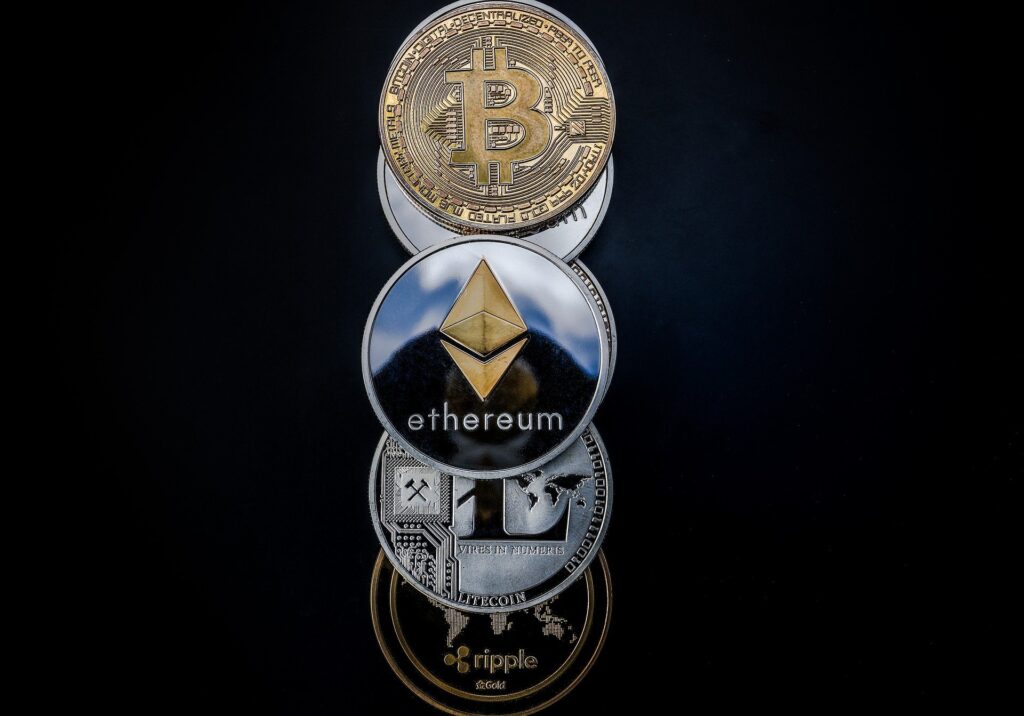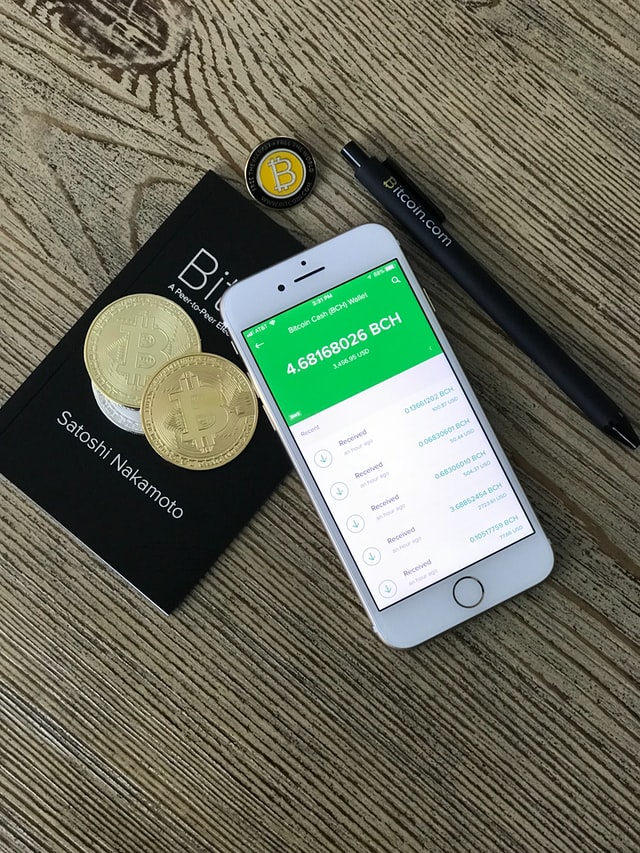An article to understand the relationship between Bitcoin and blockchain
In recent years, the popularity of Bitcoin and blockchain is obvious to all. Many people still have little understanding of the concept of Bitcoin and blockchain. They can’t tell the difference between Bitcoin and blockchain. They even mistakenly believe that Bitcoin is the blockchain. So, what is Bitcoin? What is blockchain? What is the relationship between the two?
1. What is Bitcoin?
Bitcoin is a decentralized cryptocurrency same as a Peer to Peer (P2P) network. Peer-to-peer transmission means a decentralized payment system. The concept of Bitcoin was originally proposed by a person named Satoshi Nakamoto on October 31, 2008. On January 3, 2009, Satoshi Nakamoto used a personal computer to mine the world’s first batch of Bitcoin. The birth of Bitcoin was officially announced.
Bitcoin is a peer-to-peer, decentralized, universal, non-exclusive, and cryptocurrency payment technology based on blockchain. Bitcoin does not rely on any institution or individual issuance. It is generated by numerous calculations through a proof-of-work mechanism, which is commonly known as “mining.”
The use of Bitcoin requires a distributed database composed of many nodes in the entire peer-to-peer network to confirm, verify, and record all transactions. The total amount of bitcoins is limited, only 21 million. So far, over 18.69 million have been mined. It is expected that all bitcoins will be mined by 2140.

Generally, Bitcoin has the following characteristics:
A. Decentralization – Bitcoin
Bitcoin is maintained equally by multiple parties and is not subject to centralized control. All participants are independent individuals with equal power. In the Bitcoin network, no one participant has the right to change or influence the decisions of other participants. Any participant can enter and exit freely without affecting the entire system and other participants.
B. Open, transparent, and Tamper-proof -Bitcoin
The Bitcoin system is open. The data is open to all nodes, and any node can have a general ledger of the entire network, so the information of the entire system is highly transparent. Blockchain is the underlying technology of Bitcoin. Blockchain’s data structure stores all historical data after the creation of the block. Any piece of data on the blockchain can be traced back to its origin through the chain structure. Once any information of Bitcoin is added to the blockchain through consensus, it is recorded by all nodes together. It is ensured by cryptography that it is related to each other before and after, so the difficulty and cost of tampering is extremely high.
C. Global circulation – Bitcoin
Bitcoin transactions have no national boundaries and can be circulated on a global scale. Through the blockchain network, any node in the world can conduct Bitcoin transactions.
D. The total amount is constant – Bitcoins
The total amount of Bitcoins is constant at 21 million coins issued. The characteristic of finite total amount gives Bitcoin the characteristic of “digital gold”. So far, some Bitcoins have been locked/lost because of factors, such as losing private keys or damage to the hard disk, and cannot be circulated. Therefore Bitcoin Coins become more scarce and have more investment value.
E. Halving mechanism
Bitcoin is issued through mining. Simply understand that Bitcoin is stored in different blocks. The way to dig blocks is to solve a complex mathematical puzzle. Whoever solves the answer to the puzzle first, and broadcasts the news quickly, is confirmed by the entire network. After that, you can get the reward of the block in which it is located, which is called mining reward.
Bitcoin stipulates that for every 210,000 blocks (approximately 4 years) mined, the output of subsequent blocks must be halved. On average, a block is mined every 10 minutes. In the first four years, each block contains 50 bitcoins. After three halvings, there are now 6.25 bitcoins in each block. To ensure that the average block time is 10 minutes, Bitcoin has added a difficult change to the mining rules. The difficulty of the math puzzle will be adjusted once every 2016th block.
2. What is a blockchain?
Before Bitcoin was created, there was no such term as “blockchain”. With the rise in the price of Bitcoin and the long-term stable operation of the Bitcoin system, people adopted the technology behind Bitcoin and named it “Blockchain”.
The essence of the blockchain is a continuously growing and correlated list of data records. We can think of the blockchain as a ledger that contains all transactions. The second page of the ledger will summarize the content of the first page. Blockchain will continue to record the transaction information that occurs on the next page. To facilitate verification, each page of the ledger is also marked with the time when it is recorded. After the time is marked on the third page, all the contents recorded on the second page will be summarized. The transaction information that occurred on this page will also continue to be recorded. The fourth and fifth pages can be deduced by analogy, so this chain structure is a very connected ledger as well.
It should be noted that the blockchain is not a single, brand-new technology. It is the result of integrating multiple existing technologies. We can understand the blockchain from two levels in a narrow sense and a broad sense. In a narrow sense, a blockchain is a chained data structure with a block as the basic unit. The block uses a digital summary to verify the previous transaction history, which is suitable for tamper-proof and expandable requirements in the distributed accounting scenario. In a broad sense, blockchain also refers to distributed storage, consensus mechanisms, cryptographic principles, smart contracts, etc. based on the blockchain structure.

A. Distributed storage
Distributed storage means that the chain structure of the blockchain is not only one person (node) connected in series, but an open, transparent, and non-centralized program, which is determined by a method called “consensus mechanism”. Through the storage resources of distributed nodes, the storage synchronization of all nodes in the entire network is performed, and the corresponding consensus technology is used to ensure the effectiveness of internal nodes to change the storage content and maintain a complete and searchable database. Distributed storage has the characteristics of scalability, low cost, high performance, and ease of use.
B. Consensus mechanism
Because of the high network latency of peer-to-peer networks, the order of transactions observed by each node may not be the same. Therefore, the blockchain system needs to design a mechanism to agree on the order of transactions that occur at about the same time. The algorithm that reaches a consensus on the sequence of transactions within a time period is called a “consensus mechanism.” There are several common consensus mechanisms such as Proof of Work (PoW), Proof of Stake (PoS), Delegated Proof of Stake (DPoS), etc. Bitcoin uses PoW is a consensus mechanism.
C. Principles of Cryptography
Cryptography is a branch of mathematics and computer science, and its principles involve a lot of information theory. The application of cryptography principles in the blockchain is to ensure the security of data, value transfer, and access, including hashing algorithms, elliptic curve algorithms, asymmetric encryption, Base58 encoding, etc. These principles are achieved through a series of complex operations Ensure data security on the blockchain.
D. Smart contract
As early as 1994 when the Internet first appeared, the concept of smart contracts had been proposed by Nick Szabo. It was only in recent years that with the development of blockchain technology, it has gradually become familiar to society. The smart contract refers to a set of commitments defined in digital form, including agreements on which contract participants can execute these commitments. Its concept has three major elements: commitment, agreement, and digital form.
Promises are the rights and obligations agreed by contract participants. These promises define the nature and purpose of the contract; agreements are technical realizations. On this basis, contract promises can be realized, or contract promises are recorded; digital form means that the contract must be written in computer-readable code, the established smart contract is executed by a computer or a computer network. The working principle of a smart contract is that when a pre-programmed condition is triggered, the computer will immediately execute the corresponding contract terms without relying on a third party to execute the contract.
Smart contracts were proposed so early, but in the end, they were widely used on the blockchain. The main reason is that the blockchain solves the most critical trust problem in the operation of smart contracts. In the real world, whether a contract is written on paper or recorded in code, there is a risk of being tampered with or being attacked by hackers, but blockchain technology provides a decentralized, Tamperproof, traceable, and secure transparent system that solves the above problems.
3. The relationship between blockchain and Bitcoin
In 2008, when the financial crisis broke out, Satoshi Nakamoto, the founder of Bitcoin, wanted to design an electronic currency that is not controlled by centralized institutions. When conceiving the underlying infrastructure, he made a very important decision: abandon the traditional center. Based on the model of the database, we designed a set of strong decentralized underlying mechanism on the basis of drawing lessons from the predecessors. Everyone can participate in this mechanism, with equal authority, no centralized team or agency intervention, and once the data is recorded, it cannot be changed at all. With time, people found that the advantages of Bitcoin’s mechanism became more and more obvious. Even if the founder disappeared, it could continue to operate stably. So everyone took out this set of underlying mechanisms for research and named it “Blockchain”.
On the whole, the relationship between Bitcoin and blockchain can be discussed in two points. The first blockchain technology is the underlying technology of Bitcoin, and the second Bitcoin is the first application based on blockchain technology and is currently the most successful. Of an application.
(1) Bitcoin is the first application of blockchain technology
After Bitcoin was created, it was quickly touted, and after the price soaring, people began to pay attention to its underlying technology. After in-depth research, people found that this technology can be applied to many fields, and later this technology was named blockchain technology. At present, according to the development history of blockchain, it is defined as the era of blockchain 1.0, 2.0 and 3.0.
The blockchain 1.0 era only refers to the underlying technical architecture that supports the operation of the Bitcoin system, which is a narrowly defined blockchain. At this stage, Bitcoin’s goal is to replace the traditional financial system and explore the feasibility of becoming a global payment currency. The expansion of the blockchain that emerged at this time was mostly around improvements aimed at Bitcoin.
Around 2014, Vitalik Buterin used smart contracts to abstract the “decentralization, openness, transparency, consensus mechanism, token model” and other features of the Bitcoin technical architecture, and upgraded it to Blockchain 2.0, a block in a broad sense. The concept of the chain was born. Blockchain 2.0 is programmable finance, a blockchain application in the economic, market, and financial fields.
With blockchain 3.0, the development of technology can meet more complex business logic and expand the application scenarios from finance to all walks of life. “Blockchain+” basically covers all aspects of life, including film and television copyright, food safety, Healthcare, logistics, election voting, public welfare, etc.
On the whole, the entire iterative process of blockchain from 1.0 to 2.0 to 3.0 today has lasted more than 10 years. If blockchain 1.0 is the budding of blockchain technology, then 2.0 is blockchain and finance, namely Blockchain is considered to be the most likely to be the first to make a breakthrough in the scene, and when it comes to Blockchain 3.0, it will be a full-scale explosion and promote greater industrial reforms.
(2) Bitcoin has been given more powerful functions besides payment
After over ten years of development, Bitcoin has formed a strong consensus on a global scale and has become a valued asset anchored by thousands of assets in the crypto world. Due to its scarcity and deflationary issuance mechanism, more and more people regard Bitcoin as “digital gold”. Due to the low correlation between Bitcoin and other assets, after the outbreak of the new Covid epidemic, for inflation expectations and the search for high-yield assets, Bitcoin was accepted by more and more mainstream institutions, which became their diversification of investment risks. , Realize the investment target of asset diversification. Up to now, at least 130 countries around the world have issued laws or policies on Bitcoin, and terms, definitions, risk warnings, taxation, etc. have all been included in the scope of supervision. Besides the spot market, the derivatives markets surrounding Bitcoin, such as futures, options, ETFs, etc., are also booming, and the market is becoming increasingly mature.
The original intention of Bitcoin was to cope with the drawbacks of the existing financial system. Its generation method based on an encryption algorithm solved the trust problem. However, after over ten years of development, Bitcoin has consolidated its unshakable consensus. People are concerned about encrypted assets. Confidence continues to increase, and Bitcoin has become a store of value for those troubled emerging markets.
